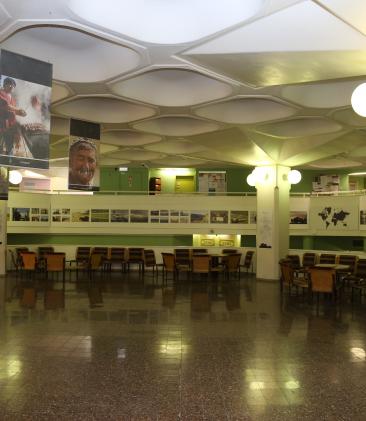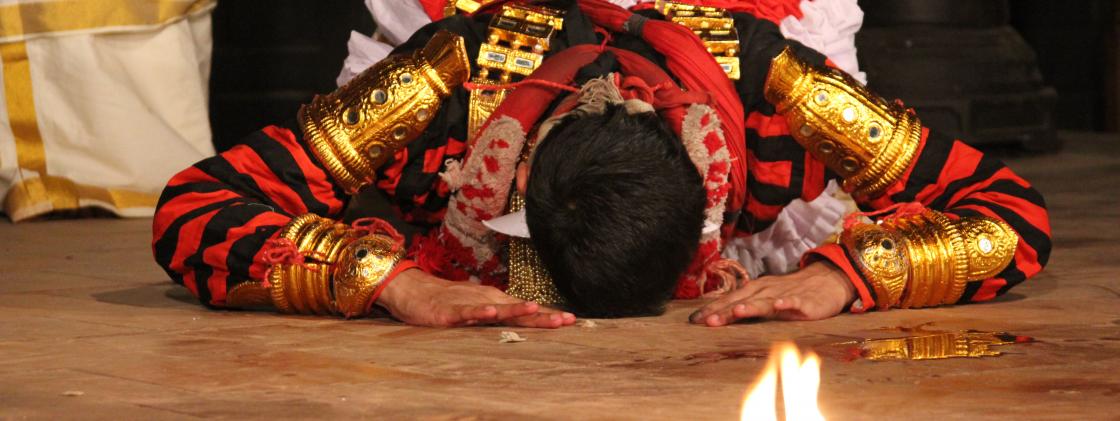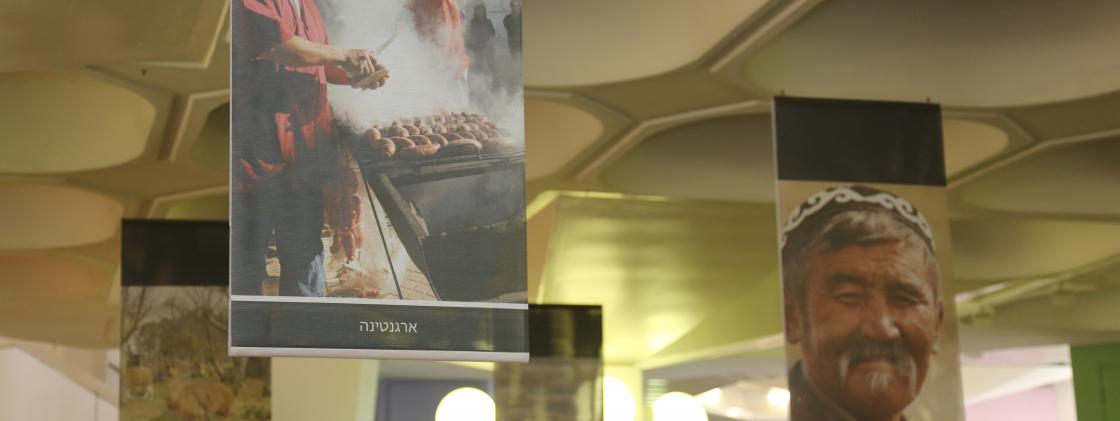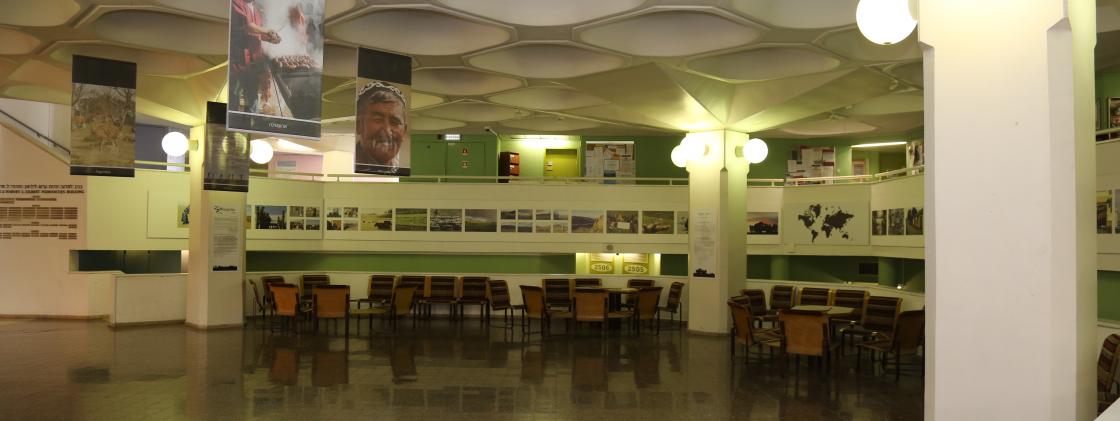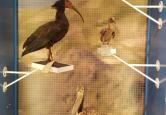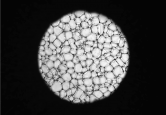An important part of the studies and research in the Faculty of Humanities is rooted in direct contact with the world outside of the University, in Israel and abroad. Such excursions outside the University improve the learning experience and widen the horizons of both students and teachers. In this framework, delegations from various departments of the Faculty have toured in recent years in different countries around the world, such as Italy, Turkey, the United Kingdom, Uzbekistan and other places. They visited museums, walked around cities, went to the theater, moved about the countryside, investigated archeological sites and encountered local peoples and their cultures. In the summer of 2010, two delegations set out from the Faculty, to Argentina and Mongolia, can be seen in this inspiring exhibition. Again we learn that the text is not only the written word, but also material culture, along with the human and natural landscape.
Reuven Amitai, Dean, 2010-2014
Impressions – Study Tour to Buenos Aires 2010
On the occasion of opening the summer programs abroad, the department launched a pioneer delegation of 17 students and 2 faculty members to Buenos Aires for three weeks. During the trip, the students studied Spanish according to their academic level, and in addition studied the history, culture and politics of Argentina and Latin America.
The participants of the summer program met with students from some of the universities in Argentina, visited a 13th century colonial city in Uruguay and participated in various educational tours important for understanding the Argentinean scene: the House of Governors, the president's residence, a dictatorship era torture camp, the building of the Jewish community (AMIA) that was destroyed in 1994 during a terrorist attack, as well as the notorious immigrants' neighborhood – "La Boca". The delegations met with the mayor of the city "La Plata" (Capital of the province of Buenos Aires) and received an honorary award. As part of the program, one day was devoted to volunteering with children in distress in Buenos Aires.
During the visit various cultural activities and events also took place that contributed to the understanding of the daily life in Buenos Aires including visits to: the waterfront neighborhood of Tigre, the famous art fair in Recoleta, and the neighborhood of Palermo. The group attended Tango classes, a Soccer match in the Argentinean premier league, Argentinean rock concerts, and a special day was devoted to a visit to the Argentinean country side that included the great culinary experience of the famous Argentinean "Asado" meat along with cultural and historical stories about the Argentinean cowboys also know as the Gauchos.
The Department of Romance and Latin American Studies in the Faculty of Humanities organizes summer programs for study aboard (Buenos Aires, Rio de Janeiro, Madrid, Cuba etc.), whose main goal is to academically and culturally enrich the studying experience in the department. Students that are registered in the department in the major track are entitled to finish their Bachelor degree in Spain or in one of the countries in Latin America.
The Seminar in Mongolia, Summer 2010
Close to the end of the academic year 2010, we were informed to our delight that on behalf of the Faculty of Humanities of the Hebrew University, an educational mission to Mongolia is planned for the summer. A very surprising group of lecturers from different faculties and students was formed. Headed by Prof. Reuven Amitai and Prof. Michal Biran and organized by Mrs. Naama Arnon, Mr. Ohad Nevo and "Barak Afik" company, the group started for a challenging and fascinating journey.
The journey started from a visit and a series of lectures in Ulan Baatar University, after which a collaboration agreement between both universities was signed. After that, the group headed to the wild Mongolian steppes, in search of archeological remains, and combined with academic explanations tried to clarify, how on earth, Genghis Khan and his sons have conquered the biggest empire in the world.
During this journey, differences of age and rank disappeared and we became a consolidated group. We visited excavations of ancient Khitan and Mongolian cities, slept in Gers (Mongolian tents), drove long hours on unpaved roads, crossed rivers, rode horses, ate and danced in the nature, experienced sun, rain and hail and a lot of sky.
This exhibition represents a tiny bit of the very special experience which we all have gone through. We hope you will find it interesting, and that similar learning practices will happen in the future.
Members of The Mongolian Team 2010.
Kūḍiyāṭṭam —Sanskrit theater in Kerala
Kūḍiyāṭṭam is the last representative of classical Sanskrit theater, surviving only in the state of Kerala on the south-western coast of India- For centuries it was a temple art linked to the ritual cycle and the presence of the god as a primary spectator. Today it continues to thrive despite the loss of its traditional economic basis in temple patronage.
Kūḍiyāṭṭam is a highly intricate expressive genre that demands from the audience some knowledge of the language of hand- and eye-gestures (abhinaya) and the patience and commitment to stay engaged for very long performances (ranging from some ten to one hundred and fifty hours for a single act of one of the major texts). Its repertoire is drawn from classical Sanskrit dramas as well as from works composed for this art form in medieval Kerala.
Each day the actor undergoes a long process of make-up, assuming the colorful external form of the character as well as the internal transformation necessary to play the role. Performance includes accompaniment by the ancient Miḷāvu drum with its great tonal and emotional range, Female performers enact a variant of Kudiyattam known as Naṅṅyār kūttu.
Kūḍiyāṭṭam has been recognized by Unesco as a "masterpiece of the oral and intangible heritage of humanity." With the support of the Hebrew University and the Humanities Fund of Yad Hanadiv and Vatat, research teams of Hebrew University students and faculty, together with participants from other universities, have visited Kerala to record and study performances in 2008, 2010, and 2011.
Islam, Buddhism and Jainism in North India
Islam is the second largest religion in India, with over 130 million adherents — about 13.4 percent of the republic's population. Arab traders first brought Islam to the southern Malabar Coast, in today's state of Kerala, in the seventh-eighth century. Sindh, in the northwest of the subcontinent, was conquered by the Arabs in the early eighth century, and from the eleventh century onward Muslim conquerors from Central Asia, Afghanistan, and Iran established themselves in the north.
Throughout north India and large parts of the south, a rich cultural symbiosis of Islam, Hinduism, and other religions and sects came into being. Indian Muslims have produced an astonishing legacy in art, architecture, music, and intellectual life. In 1947, as the British left, the subcontinent was partitioned into two states: the secular Republic of India and the Islamic Republic of Pakistan.
Alongside Islam and Hinduism we find in north India large communities of Jains, particularly in Gujarat, and Buddhists in the regions bordering on Tibet, Bhutan and Nepal. Both Jainism and Buddhism are historic Indian religions, first appearing in the mid-first millennium B.C.E. and flourishing without interruption until today.
Tyāgarājasvārni temple
The paintings at the top of the column are taken from the Tyāgarājasvārni temple in Tiruvārūr. This temple, located in the Kāveri Delta Of Tamil Nadu, is one of the most ancient and most important Śiva temples in south India. Here Lord Tyāgarājasvāmi, "Master of Giving", dances the "Ajapā (Soundless)" Dance that reflects the rhythm of Viṣṇu's breathing. Tyāgaraja was brought to Tiruvārūr by the monkey-faced Coḷa king Mucukunda, whose story was painted on the ceiling of the Devasiriya Maṇḍapa in the mid-seventeenth century. These paintings are among the best preserved and most beautiful from medieval south India.













